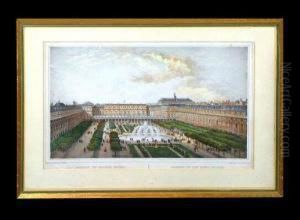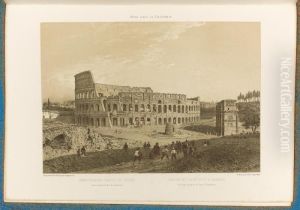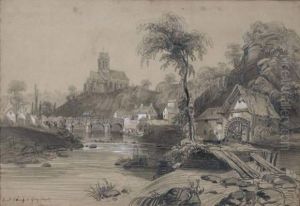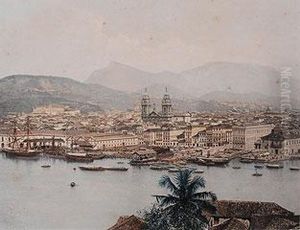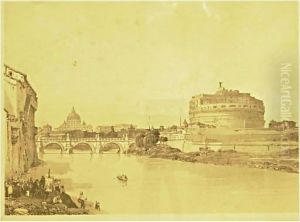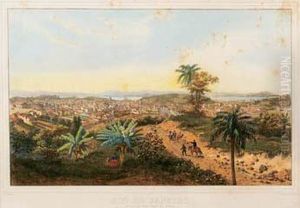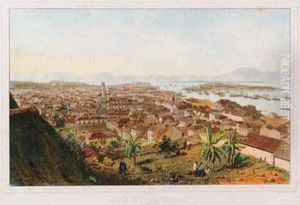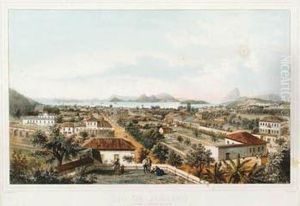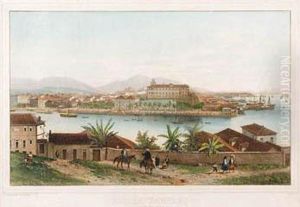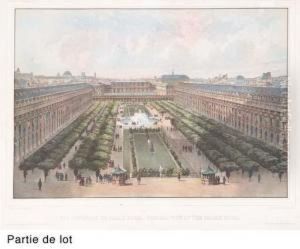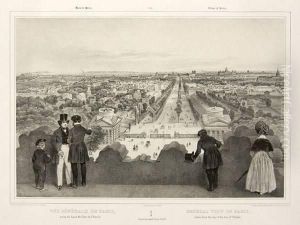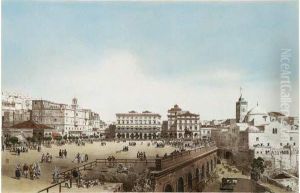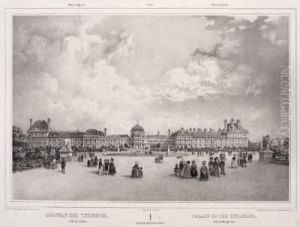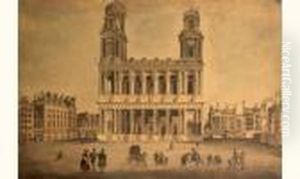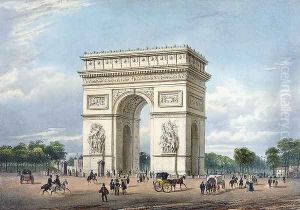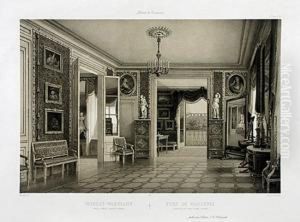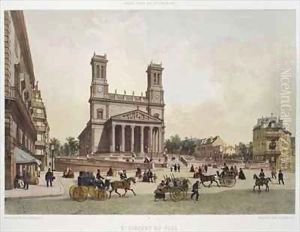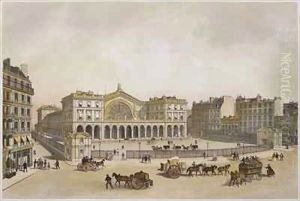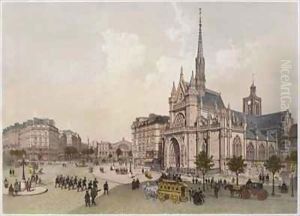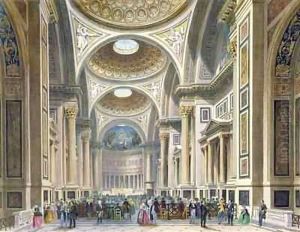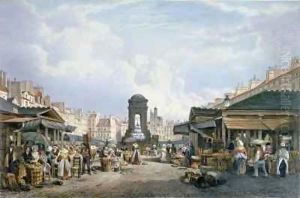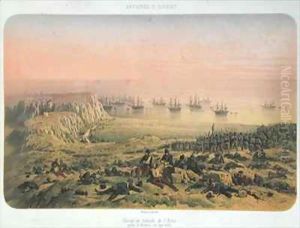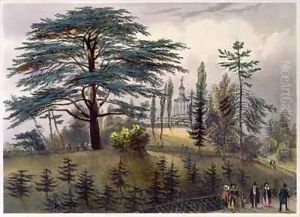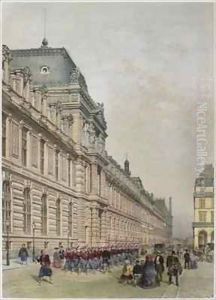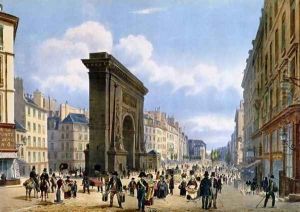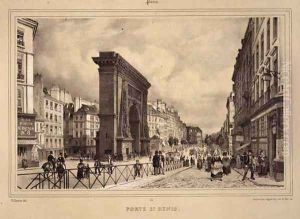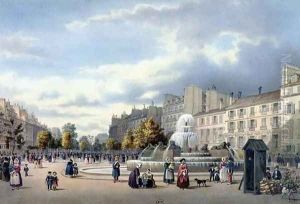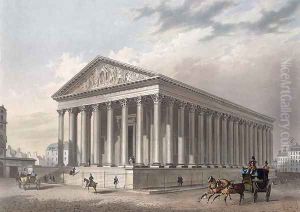Philippe Benoist Paintings
Philippe Benoist, born in 1813, was a French artist known for his work as a lithographer and painter. He was an active artist during the 19th century, a period that witnessed significant transformations in the world of art, with movements like Romanticism, Realism, and Impressionism emerging in succession. Although not as widely recognized as some of his contemporaries, Benoist made a name for himself primarily through his detailed architectural and city view lithographs.
Benoist's work often reflected a fascination with architecture and urban landscapes, which was a common theme among artists of the time who were captivated by the changing face of European cities during the Industrial Revolution. He produced a series of lithographs that depicted various locales with remarkable accuracy and attention to detail, capturing the essence of the sites at a time when photography was not yet widely used.
One of Benoist's most notable projects was a set of lithographs illustrating the Holy Land, including views of Jerusalem and other significant biblical locations. These prints were created in the mid-19th century and were part of a larger trend of Orientalism in European art, where artists and writers depicted scenes from the Middle East and North Africa, often imbued with exoticism and romanticism.
Despite his dedication to his craft and the quality of his work, Philippe Benoist did not achieve the level of fame enjoyed by some of his peers. Nevertheless, his lithographs remain valuable for their historical and artistic merit, providing insight into the urban and architectural character of the past. Benoist's legacy lives on through his contributions to lithography, a medium that played a crucial role in the democratization of art by making it more accessible to the public.
Philippe Benoist's career spanned much of the 19th century, and he witnessed the evolution of art during a vibrant period of cultural and political change. His death in 1905 marked the end of a life dedicated to capturing the world around him, and his works continue to be appreciated by those interested in lithography, architectural art, and the history of urban landscapes.
